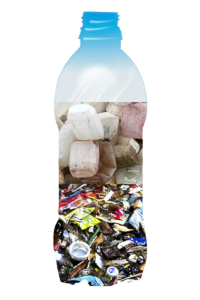Environmentalists have long evangelised the three R’s – Reuse, Redesign and Recycle – so why has the debate surrounding the UN Plastics Treaty so far been dominated by the least sustainable of the three? Dr Francis Oremo argues that a truly circular economy for plastics must support reuse and redesign and treat recycling as a last resort.

Recycling of plastics is at the heart of the circular strategy favored by two major coalitions that have emerged in the wake of negotiations for a proposed UN Plastic Treaty by the Intergovernmental Negotiation Committee (INC) in Punta del Este, Uruguay. The High Ambition Coalition to End Plastic Pollution – led by Norway and Rwanda – aims for an agreement that will prevent and reduce the consumption and production of plastics, promote a circular economy, and provide for recycling. Similarly, the Business Coalition – led by WWF and Ellen MacArthur Foundation with the backing of key multinationals and NGOs – roots for a circular economy approach with all plastics to be reused, recycled or composted at scale. It further recommends a dedicated fund for recycling infrastructure.
While a strong focus on recycling is commendable, for plastics recycling is an expensive, energy intensive and ineffective option. Currently less than 10% of plastic waste generated globally is recycled, 12% incinerated, and the rest accumulated in landfills or leaked to the environment.

Most plastics are not recyclable, and materials produced by recycling are often low-grade and rarely retain their original quality. One reason for this is that plastic products contain a load of additives to improve specific properties such as hardness, softness, ultraviolet resistance, flame formation resistance, or their behavior during manufacturing process. The content of additives in plastics varies from less than 1% in PET bottles to 50-60% in Polyvinyl chloride (PVC), additives which can substantially undermine the quality of recycled materials.
The chemical composition of plastics – including additives – create physical and toxicological barriers to “closing the loop” on the material, and creates risks such as poor quality secondary materials, and ecological and human exposure to toxic chemicals. A lack of clarity concerning the presence and nature of these additives has been the subject of controversy as they are associated with environmental and health concerns. Reluctance on the part of plastic manufacturers to publicly disclose the details of additives in their products has resulted in widespread suspicion amongst environmental groups. This lack of transparency about what additives are used in different materials also risks potentially dis-incentivising plastics recycling.
Recycling of plastics is also costly and energy-intensive because it is more expensive to produce plastic products from recycled polymers than virgin plastics. And in developing countries with high energy cost, it might be more tempting to incinerate rather than to recycle plastics. Currently, recycling, incineration and landfill are widely used to manage plastic waste, each of which release a lot of greenhouse gases and other pollutants harmful to both the environment and human health.

A more ambitious approach to the circular economy based on higher circularity strategies could substantially reduce use of virgin feedstock whilst also lowering waste and emission outputs. This would include strategies such as increasing the efficiency of manufacture by consuming fewer natural resources, ensuring products are re-used, shared or repaired rather than thrown away or even making the product itself redundant by removing the need for it or fulfilling the same need via a more sustainable alternative. A higher level of circularity of materials also entails extending the lifetime of products and their components.
The circular economy (CE) seeks to promote cleaner production and resource sharing, and extend product life through a combination of repair, maintenance, reuse, refurbishment and re-manufacturing. For plastics, circular economy solutions entail (i) producing plastics from alternative non-fossil fuel feedstocks; (ii) using plastic wastes as a resource; (iii) redesigning plastic manufacturing processes and products to enhance longevity, re-usability and waste prevention; (iv) collaboration between businesses and consumers to encourage recycling and increase the value of plastic products; (v) encouraging sustainable business models which promote plastic products as services, and encourage sharing and leasing; (vi) developing robust information platforms to aid circular solutions; and (vii) adopting fiscal and regulatory measures to support the circular economy.
Recycling alone – particularly low-grade recycling – is still closely associated with a linear economy. While recycling may reduce pressure on natural resources and divert waste away from landfills, it presents sustainability challenges for plastics product designers and manufacturers. Ultimately, the two coalitions – the High Ambition Coalition to End Plastic Pollution and the Business Coalition – should aim for a highly ambitious circularity strategy that promotes smarter product use and manufacture whilst extending the lifespan of the product and its components by redesigning plastic manufacturing processes and products.


It is interesting to see how the argument around the waste hierarchy has shifted. Recycling used to be seen as the solution but is now being rapidly replaced by other more sustainable methods for keeping the stocks of materials in the economy. A very interesting analysis of these issues.